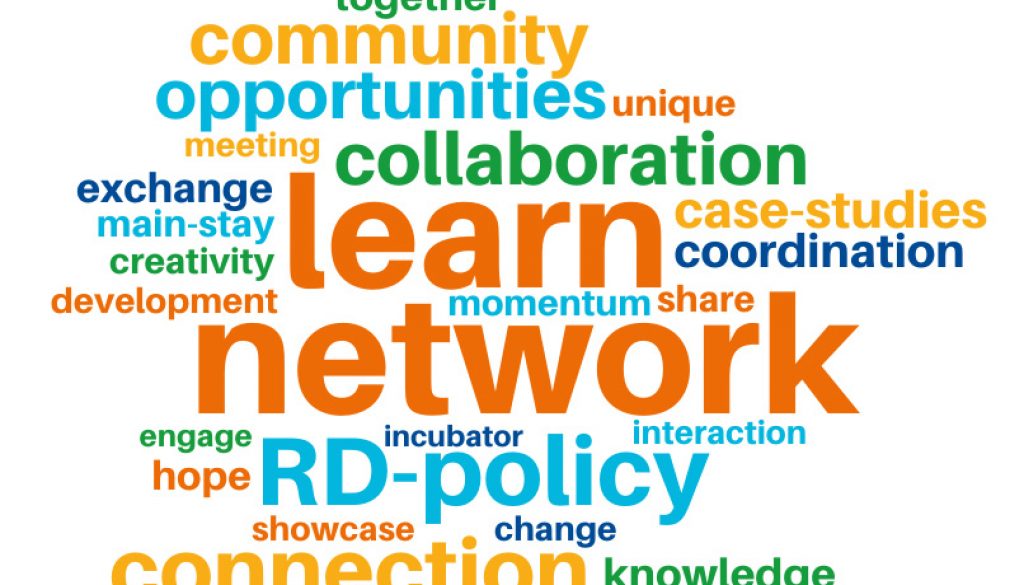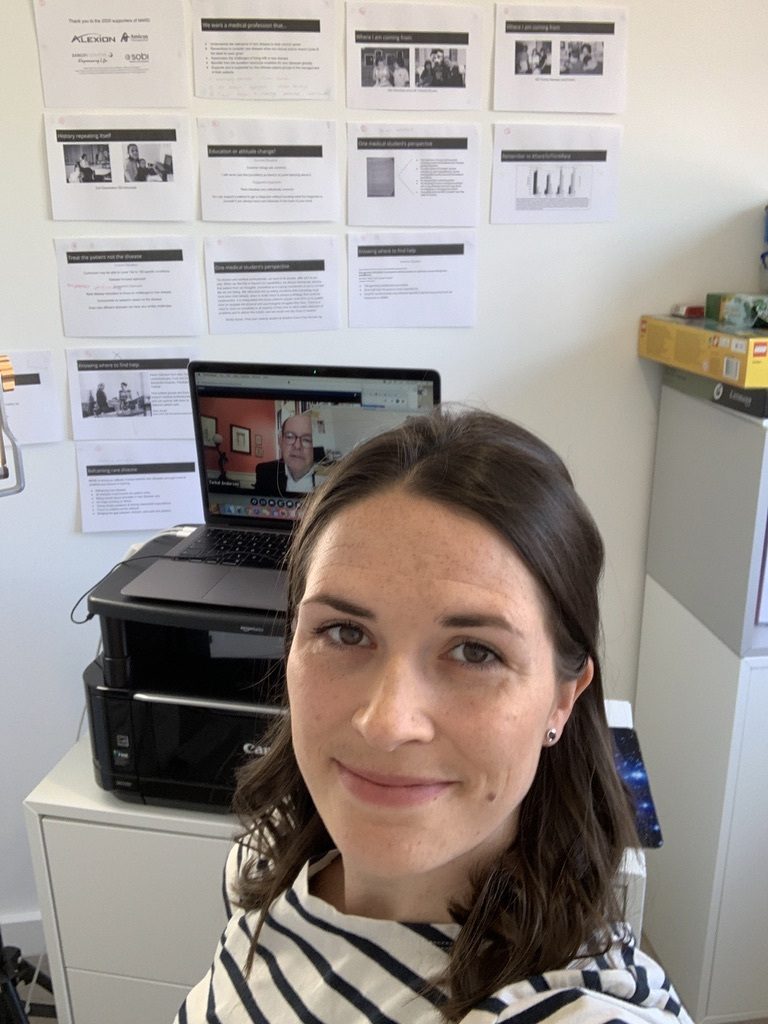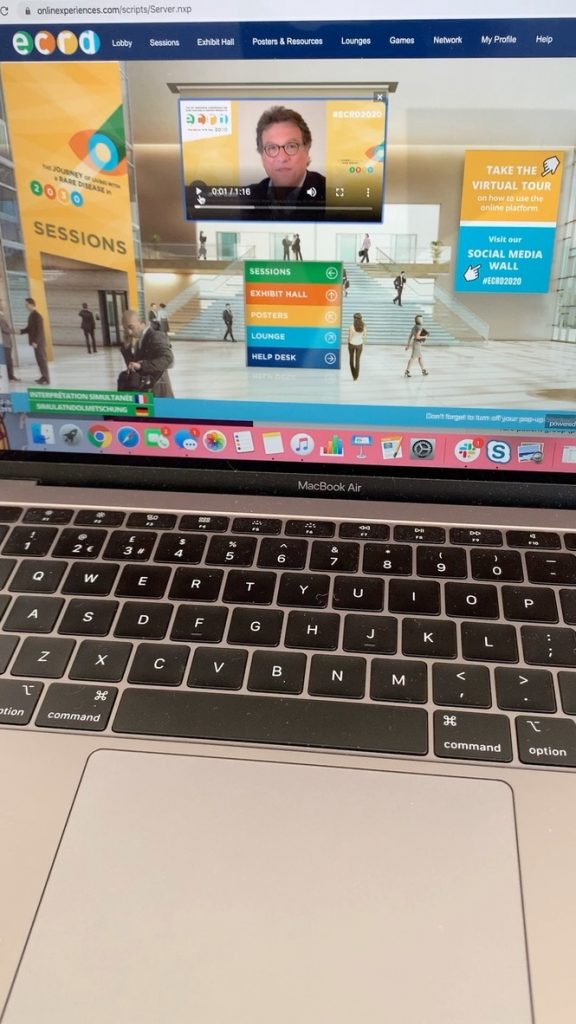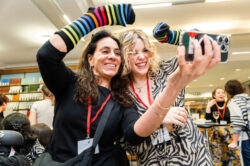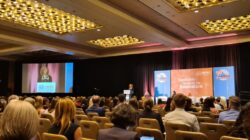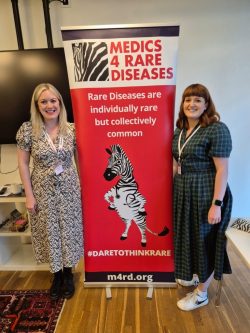The rare disease patient journey in 2030
Thanks to the wonders of modern technology and an amazingly powerful online platform #ECRD2020 took place virtually on 14th & 15th May. The conference was organised to take place in Stockholm, but due to the ongoing COVID-19 pandemic, the conference was moved online by the organisers from Eurordis.
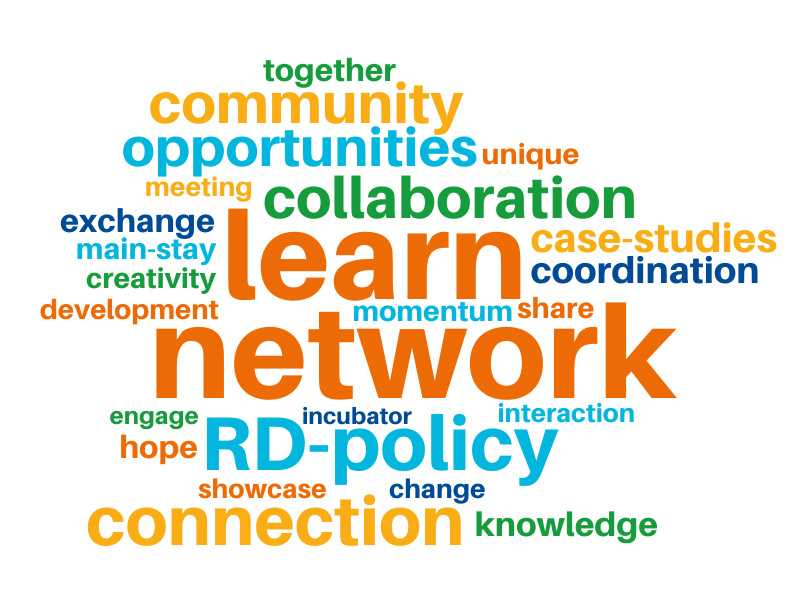
This year’s European Conference on Rare Diseases drew on the ongoing work of the Rare 2030 project. Rare 2030 is a foresight study that gathers the input of a large group of patients, practitioners and key opinion leaders to propose policy recommendations that will lead us to improved policy and a better future for people living with a rare disease in Europe. This a two year project will end this year in a presentation to parliament providing recommendations on the most critical areas needing sound policy. The learnings of #ECRD will form part of these recommendations.
We’re looking towards 2030 because you cannot predict the future but you can prepare it. So participants of #ECRD2020 were actively challenged to think in terms of policy. How can what we talk about be translated into actions that result in real change for those living with a rare disease?
Rather ironically the pandemic has already lead to real change as it opened up this learning and networking opportunity to those who cannot travel whether that’s due to cost, commitments or health.
This was my first ever entirely virtual conference. I was already excited to be a part of #ECRD2020 but this felt like history in the making. There were delegates who could now attend because they didn’t have to travel. This is an amazing moment for making events like these more accessible.
Dr Lucy McKay, CEO M4RD
The future of diagnosis: new hopes, promises and challenges
On Day One, Lucy presented M4RD’s strategy to reduce the diagnostic odyssey during Theme 1, Session 1 titled ‘The future of diagnosis: New hopes, promises and challenges’. The pivotal question of this session was ‘how can we achieve faster and more accurate diagnosis?’.
After and introduction from the Chair, Dr Lucy Raymond, M4RD’s Lucy spoke first. This felt apt as her message was about the need for early basic education on rare disease in medical training. She laid out the M4RD strategy as having 3 parts:
- ATTITUDE – Helping medics understand that rare disease is a global and particularly child health issue that will be relevant to their medical careers.
- APPROACH – Providing trainers and training organisations with a robust approach for teaching about rare disease that is equitable between diseases and realistic in terms of time requirement.
- SUPPORT – Once medics are ready to #daretothinkrare signposting them to reliable and up to date resources that can be used by themselves and their patients.
The rest of the panel went on to talk about innovations in diagnostic opportunities such as using whole genome sequencing in very sic children and using artificial intelligence to aid primary care referrals.
The hope is that in 2030 this panel will no longer be needed. Every doctor will graduate with an understanding of the health burden of rare disease in their country, when to suspect and rare disease and how to support those with rare diseases. As a result new innovations are utilised to the greatest effect for patients with rare diseases.
In 2004 The French National Plan for Rare Disease gave explicit guidance on how to prepare the medical workforce to manage patients with rare diseases. The plan laid out recommendations for different types of healthcare professionals and at different levels of training. For each training grade there are, appropriately, specific training expectations. M4RD would like to see similar guidance to be provided in the update Rare Disease Strategy for the UK.
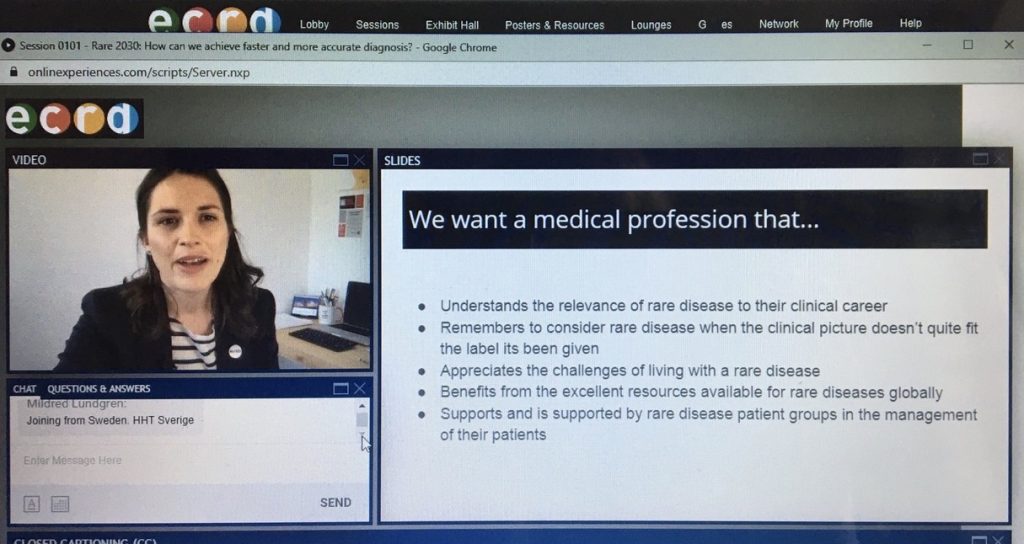
Share, Care, Cure: Transforming care for rare diseases by 2030
On Day Two, Lucy co-chaired session 4 within Theme 3 which was about addressing workforce challenges in rare diseases. Workforce planning is an essential task that takes a long time to see the results. Prof James Buchan from St Margaret’s University in Glasgow, has over 30 years of experience health workforce policy. He explained that the workforce we have today is essentially the workforce we will have in a decade’s time. Therefore we need to be forecasting well ahead in order to make the changes we need for the rare disease community.
The panel broke the problem down to WHAT DO WE WANT IN 2030 AND BEYOND? And WHAT CAN WE DO NOW?
June Rogers MBE joined as a patient group representative and Dr Svetlana Jagercrantz is a Clinical Geneticist and Training LEader of the European Reference Network GENTURIS (for genetic tumours).
Workforce planning is essentially making sure there is a sustainable stock of health professionals to meet service requirements. June echoed that opinions of many people living with rare diseases by saying the workforce is not currently effectively meeting the requirements of those living with rare diseases. The role of the expert patient needs to be valued and respected in order to have true working partnerships between clinician and patient. The NHS Long Term Plan also recommends this way of working – as well as bringing in carers as part of the healthcare team. Everyone felt that the workforce of the future needs to be more flexible and less defined by job title and more by experiences and skills. In order to have equitable care across regions and borders we need to have frameworks in which to share expertise – Svetlana talked about the role to be played by ERNs in this mission.
The panel had originally intended to discuss how digital communication and telehealth could radically change care for people living with complex diseases. Rare diseases often affect multiple body systems and patients are required to be seen by multiple specialists which poses a time and cost burden to the patient and any carers. Harnessing the power of digital health could help minimise this burden and also be more cost effective for healthcare systems. However, before this could bed discussed this in the session, the pandemic changed how healthcare is delivered almost overnight. Primary and secondary care physicians are consulting with their patients over the phone, providing advice online and even producing informative webinars. When restrictions ease this must continue to be used appropriately and to the benefit of patients – when a face to face meeting is not required.
Another major focus of discussion was generalist vs specialist physicians. Specialists in rare diseases are often as rare as the disease in question. There is also a growing concern about current specialists reaching retirement age without anyone to replace them. Plus some countries suffer brain drain after undergraduate study and the workforce of other countries benefit from this. It was argued that generalists play a really important role in rare disease as a centre point for coordinating care and having a holistic view of the patient and their family. And potentially the role of GPs in rare disease needs more attention in order for them to support their specialist colleagues. In terms of creating more specialists – the role has to be attractive and the trainees need to be retained. There needs to be investment and ensure that the workforce as enabled to be as productive as possible. This brought the panel back to allowing the workforce to be flexible. Seeing the individual as a person with experience and skills of their own rather than those that are attached to the label ‘specialist’ or ‘generalist’. Or ‘nurse’, ‘doctor’, ‘patient’
Workforce flexibility is another issue that has moved rapidly during the pandemic. Previously rigid training systems have been put aside in order to get the best care for patients. Again the world’s response to the pandemic shows that where there’s a will there’s a way. So if we can make rapid and effective change for those affected by COVID-19, surely we can do the same for the 350 million people living worldwide with a rare condition.
Rare Disease Patient Groups Innovations
M4RD also presented a poster which was available to view in Theme 7 and outlined how consistent follower engagement on social media has grown our audience and raised awareness of rare diseases. The poster is all about #MysteryDiseaseMonday on Instagram. This light-hearted social media feature boosted M4RD followers at the same time as raising awareness of rare diseases.
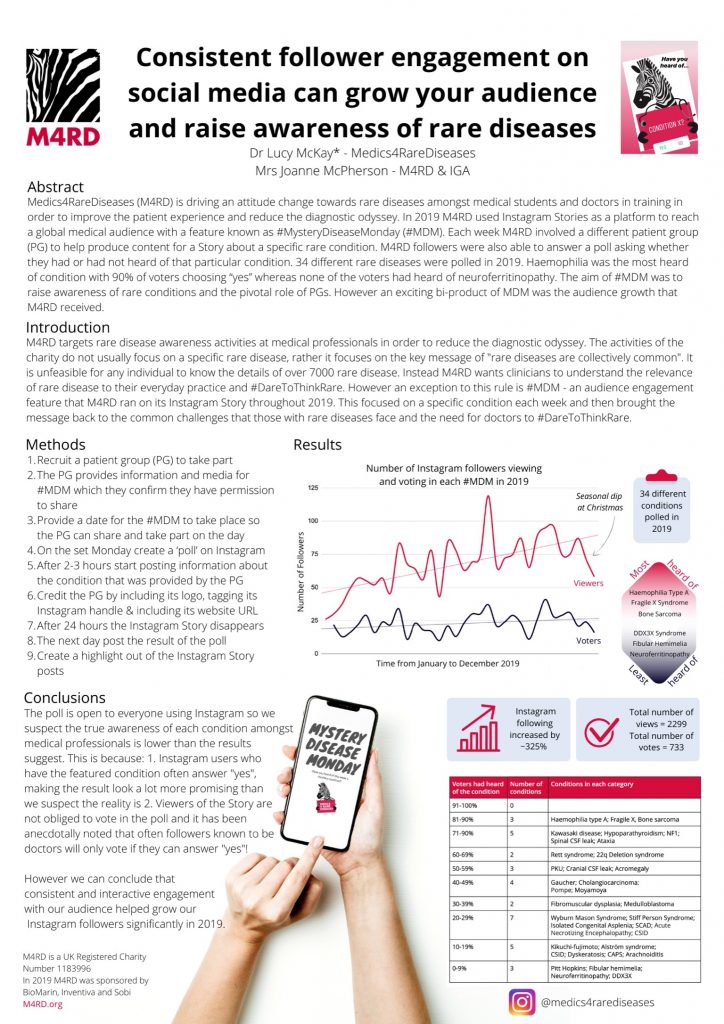
ECRD 2020 – all sessions available to you for one year!
You can access ECRD 2020 sessions for ONE YEAR after the conference until May 2021:
https://www.rare-diseases.eu/ecrd2020-all-sessions-available-one-year/

